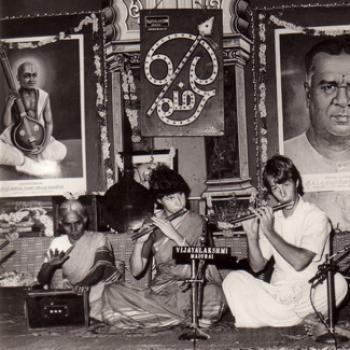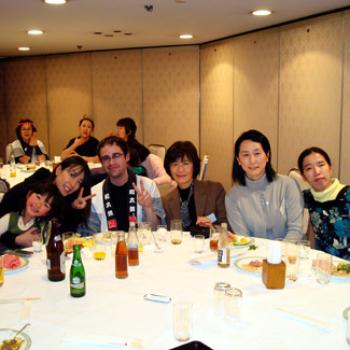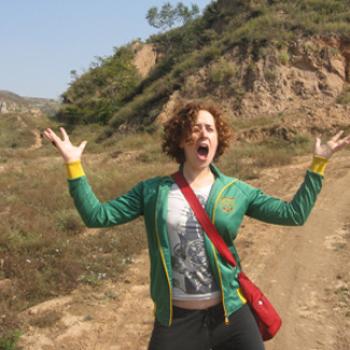On studying the legacy of war in Nicaragua
Rachel B. ’15
“I set out to learn from the village’s people by gathering oral histories of those who were living during the war and learning how it changed their lives and their country.”

My junior year of high school I traveled to a small rural village called La Estrella tucked away in the hills of Nicaragua. With a group of other students, I embarked on this adventure through an organization called buildOn, a nonprofit that sends high school students to build schools in developing countries, while also encouraging local community service. For several weeks I helped to construct a school while immersing myself in Estrella’s rich culture and bonding with the beautiful people that lived there. I left that magical place hoping to one day return, but thinking that would be nearly impossible. Almost exactly two years later, as a first-year at Oberlin I was lucky enough to make it happen.
I used my first winter term as an opportunity to go back to La Estrella with friends that had traveled there with me two years before. We all wanted to return to our host families and friends to whom we felt so deeply connected, and to learn more from the vibrant community. That semester, I had been intrigued by my seminar about the literature of war, so my professor Nancy Boutilier and I designed a project that tied this fascination to my interest in learning about the village that had welcomed me two years before. I planned to research the war between the Sandinista and the Contras in Nicaragua and explore how it affected small villages like Estrella. With the help of a grant from the winter term committee, I set out to learn from the village’s people by gathering oral histories of those who were living during the war and learning how it changed their lives and their country.
I began each interview with a single request: “Tell me the story of your life.” This simple inquiry jumpstarted countless fantastic tales that transformed the way I viewed Estrella and its people. I never needed to ask about the war specifically. It was the central, defining event in each adult’s life. To my amazement and disbelief, I was told that battles had actually taken place in La Estrella. In my first interview, the matriarch of the village’s largest family told me somberly, “I could spend a whole week telling you story after story of how we suffered during the war.” I had discovered a world of astonishing, untold stories.
By listening to these oral histories, I learned a lot about the legacy of the war in La Estrella itself. When I inquired about the village’s economic status, people explained to me that battles in rural areas like Estrella had destroyed virtually all of their farmland. Not only were there little to no exports leaving Nicaragua to contribute to economic development during the war, but when it was finally over, people had to completely restart their entire farms. When I asked about people’s educational backgrounds, I learned that many adults could not read or write because they could not attend school during the war. Like many others in the country, they were forced to put education on the back burner.
For three weeks over winter term, getting the opportunity to absorb this information firsthand from people in La Estrella provided me with an unparalleled learning experience. I personally observed challenges the village faced and drew connections between the past and present as I immersed myself in daily life there. On New Year’s Eve, I curiously watched as government officials arrived and passed out toys to the children. When I asked about this, I was told that Daniel Ortega (Nicaragua’s president who was also in power during the war) developed projects like this in an attempt to make up for hardships people experienced during the war and to gain their sympathy. Days later, I watched as Ortega was sworn in for his third presidential term on a small television screen in one of the few houses with electricity. As we watched, people around me lamented over the increasing electoral corruption. I learned about the war’s legacy from interviews, but also from everything that was happening around me.
Beyond obtaining the information I set out to learn, I was rediscovering a country, a village, and a people by collecting stories. I realized how little I had really known the first time I visited Estrella and acknowledged how much more there would be to learn after I left. Each day I was blown away by personal stories that made me question how I could have known the people of La Estrella and loved them so much without being aware of their haunting, harrowing pasts. José, an older man who fought in the war, explained to me that the government had come and taken him directly from school to fight and that he attempted to desert the army twice, but was captured both times and sent back to battle. I learned that one family had essentially stayed in their house for years to avoid being in the line of open fire, only leaving to harvest small amounts of corn and beans to eat. It was a miracle that they survived. I could not have dreamt of the horrors and wonders that were so beautifully and eloquently recounted to me.
Perhaps the most important thing I gained from my second trip to Nicaragua was a new appreciation for the power of stories. I ended each interview with a single question: “Is there anything else you want to share?” José somberly answered, “Yes. I want to thank you for coming to talk with all of us. It’s very good to remember these things we have gone through.” Initially I had worried about the emotional toll that discussing a sensitive topic like war might entail. However, after speaking with so many people, I came to realize that storytelling could be an exciting opportunity to share for some, a restorative chance to reflect for others, and, overall, an empowering experience. Even more importantly, stories are the best way for humans to connect with, relate to, and understand each other.
The connection I feel to the families of that small village tucked away in the hills of Nicaragua is intensely passionate in a way I had never experienced before and have not felt since. They have taught me lessons about love and compassion that changed me forever. After my first trip to La Estrella, I wanted to return because I felt so intimately tied to the people there who had welcomed me into their homes and hearts. After returning to learn about their past, I know those bonds have strengthened and continue to grow even stronger as I share their stories with others back home.
In the years that have passed since my adventures in Nicaragua, I have engaged in writing and art projects that illustrate my experiences, pursued classes like Latin American History and Peace and Conflict Studies at Oberlin, and I have been inspired to travel and study abroad elsewhere. After my winter term trip to Estrella, I began compiling the oral histories that were relayed to me and writing them in story form. Whenever I return to those interviews I am struck by how much I still don’t know about the village’s history and by the number of stories that might be floating inside people’s memories, just waiting to be told.
I am unsure of exactly what I will do with these stories, or if it is my place to do anything with them at all. As I enter my senior year at Oberlin, I am uncertain of a lot of things—where I will live after I graduate or what my next steps will be. Though my future is undetermined, I do know that I will return to La Estrella one day, hopefully in the near future. As my friends/travel companions, the people of La Estrella, and I have relayed to each other many times, we are a part of each other’s lives now, and for that reason I will return. Of that much I am certain.
Tags:
You may also like

On moving to India after graduation
“There is nothing like being immersed in another culture -- no longer being the majority -- to force one to recognize what profoundly cultural beings we really are.”
Anne Richmond ’83

On studying abroad
“I have dozens of hilarious stories that encapsulate a year of cross-cultural misunderstandings with a group of genuinely caring people who went out of their way on an hourly basis to make sure I was...
Sam Good ’09

On moving to China
“I struggled in basic conversation, couldn’t communicate emotion, couldn’t deal with the subtleties of the language at all, and couldn’t read anything ... in some ways I think I re-discovered the...
Beth Rogers ’07